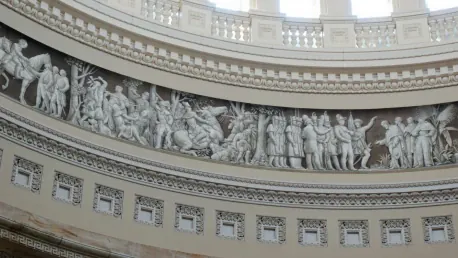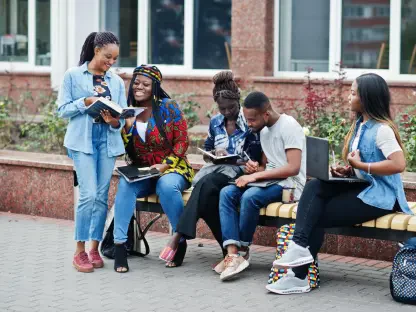At Crocker Farm School in Amherst, Massachusetts, an innovative project called the Memory Pole is enabling students to create personal life narratives through artistic expression while reinforcing the importance of storytelling and cultural heritage. This compelling initiative, deeply influenced by Indigenous cultural practices, involves students from various grade levels who engage in crafting unique pieces that highlight significant moments in their lives.
The Artistic Process
Students craft two-inch wide strips out of recycled paper bags, using a variety of artistic tools such as acrylic markers, Sharpies, colored pencils, and crayons. These strips are meant to capture significant life moments, ultimately getting laminated and attached to a 20-foot pole in the school library. The result is a communal masterpiece that reflects the diverse experiences and memories of the student body.
Inspirational Origins
The Memory Pole project draws its inspiration from Native American totem poles in the Pacific Northwest and the Maori people’s pepeha in New Zealand. While the totem poles serve as emblematic representations of family lineage and significant legends, the pepeha is a traditional self-introduction that highlights connections to people and places of importance. The goal set by school librarian Waleska Santiago-Centeno and art teacher Cindy Ferrer is to inspire students to reflect on and share their stories, fostering deeper connections to their families, community, and school.
Themes and Illustrations
Reflecting a broad array of themes, students’ drawings include depictions of favorite activities, important milestones, and personal interests. For instance, student Juniper Westgate illustrates her love for nature, pets, and games, whereas Ariela Cannon Collins incorporates her preschool memories and her favorite color into her artwork. This wide range of personal illustrations captures both joyous moments and challenging events, including the shared experience of the COVID-19 pandemic.
A Time Capsule in the Making
This initiative also acts as a time capsule, providing younger students an opportunity to revisit and reflect on their earlier contributions in the future. The Memory Pole stands as a symbol of unity and collective memory, anchoring the children’s stories at the heart of the school library for everyone to see and learn from. It is a testament to integrating individual narratives into a shared cultural fabric, allowing students to appreciate the interconnectedness of their stories.
Community Event Unveiling
The unveiling of the Memory Pole is planned for a community event in March, where students will discuss the themes and meanings behind their artwork with their families. Santiago-Centeno and Ferrer envision the pole not only beautifying the school library but also serving as a centerpiece that integrates the personal yet interwoven stories of the students, amplifying a sense of community and shared history.
The Takeaway
At Crocker Farm School in Amherst, Massachusetts, a pioneering initiative called the Memory Pole is empowering students to weave their life narratives through creative expression, underscoring the significance of storytelling and preserving cultural heritage. This groundbreaking project, rooted deeply in Indigenous cultural traditions, encourages students from various grade levels to participate. They craft unique pieces that highlight and celebrate pivotal moments in their lives, bringing personal experiences to the forefront. The Memory Pole not only enhances the students’ artistic skills but also fosters a sense of community and shared history, bridging generational and cultural gaps. By immersing themselves in this project, students gain a profound appreciation for the art of storytelling and the rich diversity of cultural heritage. Through this innovative effort, the school community is able to celebrate individual journeys while reinforcing the collective memory of their shared experiences. The Memory Pole stands as a testament to the power of art and narrative in education, promoting both personal growth and cultural continuity.









